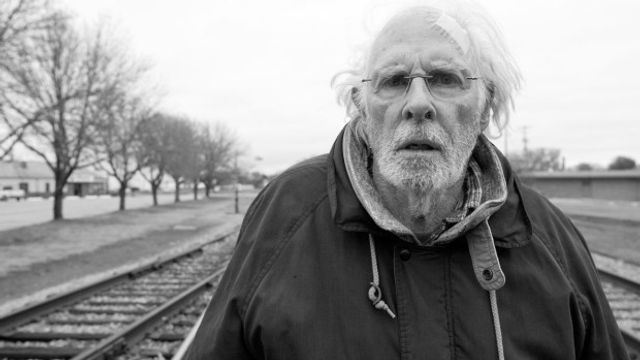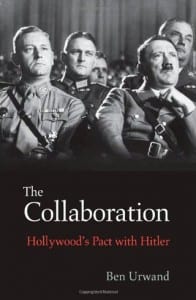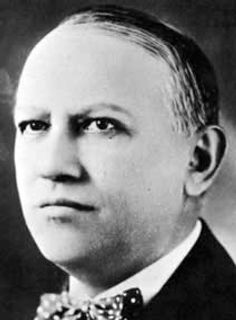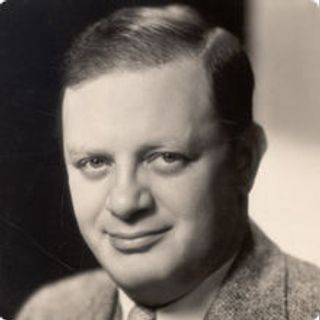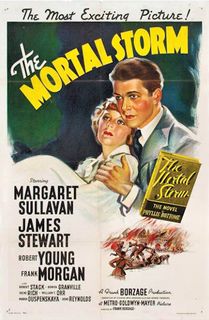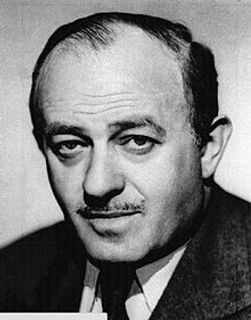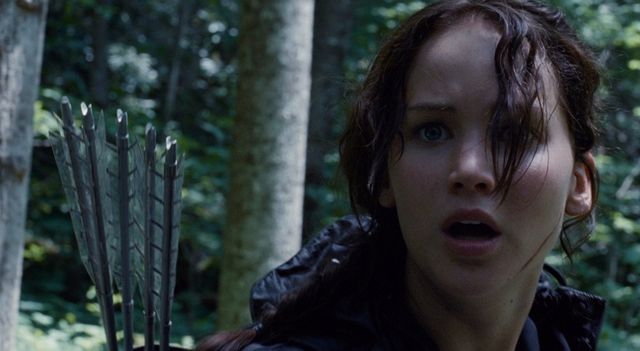 With Gary Corseri
With Gary Corseri
“I had been dreaming a complicated dream about helping poets revise their poems, so that each ending would open like a flower. I was not arguing, but engaged in a rousing discussion.”
–Diane Wakoski (from the Introduction to Bay of Angels)
Intro: I’m sure that any “literary” person, any then-nascent-feminist, any now-graybeard-hippie remembers Diane Wakoski from the 60s/70s when she was “one of the pillars of the Beat Movement” (with Ferlinghetti, Ginsberg, Corso, Snyder, Denise Levertov, Imamu Baraka, et. al.). And many of us have remained loyal fans–joining new fans–as Diane has continued to track our pulsating Culture in inimitable poetry these past 45 years!
I initiated first-contact with Diane a little after I learned that her next book, BAY OF ANGELS, would be published by Anhinga Press (it’s out now). Anhinga had published my first collection back in 1989. About 3 weeks ago, as guest-poetry editor at Counterpunch, I solicited poems, and was happy to post 2 excellent ones from Diane (including, “Frisked for Butterflies,” unpublished/unposted elsewhere): http://www.counterpunch.org/2013/08/30/wakoski-and-smith-ferri/
Over the past year or so, I’ve posted a series of conversational pieces (now called “Prologues” because one builds on, leads into, another). I collaborated with “working-class poet” Charles Orloski and with Russian scientist-poet-translator, Victor Postnikov. My most recent one with Victor Postnikov appeared here: http://www.counterpunch.org/2013/08/12/conversations-on-the-arts-politics-and-science-between-a-russian-and-an-american/
After I posted her poems, I sent Diane a copy of the above. I asked her if she’d like to collaborate with me on such. Her response: “I’m game.”
For me, these conversations are a way to present the Arts, make it “relevant,” and invite the reader to participate. It’s not a prof pontificating on meter, similes and metaphors; but, rather, two adults talking about what’s going on in the world and what they care about! A wonderful book that did for myth what I hope to do for the Arts is Joseph Campbell’s and Bill Moyers’ THE POWER OF MYTH. Based on the PBS hit from the 80s, that NY Times bestseller’s appeal was in the flowing, electric current of words between two educated, interested, down-to-earth participants!—Gary Corseri
Gary Corseri: You write in your Introduction to Bay of Angels that your own poetry and prosody have been strongly influenced by: “The New Criticism—at least the aspect of it that I interpreted like this: each poem must be a self-contained whole, not dependent on other (often arcane) works of literature.”
That’s a positive interpretation of that form of Lit Crit which established itself as the dominant modality from the 1920s to 1970s, with celebrants and exponents like T. S. Eliot, I. A. Richards, John Crowe Ransom and Cleanth Brooks. When I was an undergrad in the 60s, and, after a long work-hiatus, a Ph.D. candidate in the early 80s, New Criticism was still the methodological lens for examining a literary work. (Of course, by the early 80s there were other “contenders”—structuralism, post-structuralism, deconstructionism, and a plethora of other schisms and isms!)
One problem I had with New Critical thought was that it tended to minimize the author, to remove him/her from the political/economic milieu of his/her period. I could understand that as a reaction against 19th Century Romanticism which placed the author him/her-self front and center, over-emphasizing Shelley’s capers, or Byron’s romantic affairs, or Dickinson’s eremitism… but, I often wondered if the New Critics hadn’t strayed too far in the other direction—against the biographical, against personal contexting? I wondered if a better balance might be struck? So, I was surprised to read your salute to New Criticism, and even more surprised to find your poems in Bay of Angels quite personal, self-revelatory, and, often interwoven so that one poem is, in fact, dependent on another for its full realization, it’s “opening like a flower.”
I hope you can expatiate on this theme: What does “New Criticism” mean to you? How do you reconcile your very personal, interwoven poems with the New Critical idea of “self-contained” works of literature?
Diane Wakoski: I first began writing poetry in the late fifties when The New Criticism was new, and it gave young poets permission to become Whitmanian self-heroes/heroines of their own poems. I felt I was no longer minimalized; no longer did I have to pretend I was living in the world of Oedipus, King Arthur, Athena, or any other mythic or legendary figure. I could invent Diane as a persona—there was no stigma to writing in the first person. This was as liberating as free verse itself.
Ironically, in the late eighties, when I began to write The Archaeology of Movies and Books, my quartet of books exploring the Classic myth of Medea and Jason, again casting myself in the role of the mythic heroine, I did not feel I was abandoning New Criticism concepts, but that I was finally using them more originally. I have often quoted Henry James biographer, Leon Edel, who said something like this: “Of course, The New Critics cheated. They all knew each other and, thus, understood each other’s references. They were still alluding to matters and ideas outside the poems, just more contemporary ones.”
Young poets in the sixties were adamant about being able to use contemporary references. This led to using mythologies and legends other than the Classical, ranging from the Native American to movie gods and goddesses. One aspect of this was writing about current events, such as the Vietnam War. My own writing has always focused on the personal, and despite the fact that I grew up with a naval father, I have never written about war or other current events. But I, too, “cheat” in the sense that while I don’t require that my readers be erudite, I do want them to know my references.
GC:. Bay of Angels, the title of your newest book of poems—your 20th!— is the English translation of Jaque Demy’s film noir, “La Baie des Anges,” starring Jean Moreau (fetchingly, cinematically pictured on the cover of your book). In your Intro you write that many of your poems in Angels are about “finding solace in looking at something with a different perspective.” I found this one of the most interesting aspects of Angels, this flowing between worlds, trying on different identities. You weave movie “realities” with your personal life—lives, really. (And vice versa!) Fantasies about screen lovers like Jean Paul Belmondo merge with blood and flesh highschool boyfriends met again after 50 years!
Writers/poets used to allude to other writers; Angels is allusive to films—actors like Belmondo and Moreau and directors like Orson Wells, Roman Polansky, Jacque Demy and Woody Allen. This opens another cartography for poetry. What other poets can you name who have mined this modern common ground? Do you see yourself doing more mining here? Would you recommend that students explore these veins of gold?
DW: I, personally, don’t really know of such poets, though I suppose almost every contemporary poet has at least one poem about film.
I started writing poems using film in the Archaeology series in the ‘90s. One of my favorite poems, “Beauty and the Beast,” about the Cocteau film, La Belle et La Bete, can be found online, read by a Canadian actor, accompanied by stills from the black and white film. … I hope when a poet writes a movie poem, it is a real poem, not just a prose description of a movie!
GC: I especially liked the ending of your poem, “La Femme Nikita,” alluding to the 1990 French film. I like it because it is contradictory—gives me different insights into the (secret) world of women, “dominant-submissive relationships,” etc.:
“… Are you surprised that
I have always wanted an imprisoning world?
One that needed me enough to own me,
and that I have wanted being owned to
actually
be an adventure? Are you surprised that
I have found myself wishing to be La Femme Nikita,
not because she’s free or strong, but
because
she is bound,
she’s Promethean,
A rebel against all corrupt gods,
yet like all submissives, she
is the one who can change the balance of power?”
This highlights two contrapuntal themes in your book: expansiveness that keeps testing limits (expansiveness encapsulated in ideas like a “parallel universe,” “string theory,” “quantum mechanics”) and a proclivity for wanting to be held, “enslaved” even, “owned,” utterly known and possessed. Is this a modern female thing or is it your thing? I don’t think anyone would describe this as a “masculine” trait, but we’ve become so very sensitive about ascribing traits to gender… I confess to being a little perplexed about how to approach this.
I like the flow of language here because the words are straightforward, but suggestive of deeper mysteries. I think the best of your work does that. And, as I’ve said, this book can be quite personal—about your childhood diffidence, sense of abandonment by your “sailor-father,” loneliness growing up on the edge of a California orange grove, in a shack of a farmhouse dominated by two lonely women; and then some difficult adult relationships, etc. Coleridge defined poetry as the “reconcilement of opposites.” I wonder to what degree you are consciously working with opposites and striving towards “reconcilement”? Could one have a “rousing discussion” with oneself… and bottle the genie of poetry from that?
DW: I am always working with opposites, working towards their reconcilement.
I think if I were you–or any great conversationalist–I could have a “rousing discussion” with myself. However, as Diane, I am usually silent, tongue- tied, or a speaker of platitudes. I am busy in poetry trying to choose my words so that they include everything. I think that poetry should be more than just a conversation with oneself, no matter how rousing. That’s probably what our dreams are.
Art? Maybe art is that Zen idea of one hand clapping. I think art is a way of reaching out–to have a dialogue, discussion, conversation with the reader—who, for better or worse, can never be simply a mirror image of the poet. The reader has to want to respond. By the moment of transformation at the end of a poem, a reader should grasp that the poet is different from what he first thought. Therefore, with the genie out of the bottle, there’s a new wholeness. How can the reader not identify with that? But, it’s not a mirror-image of poet-reader. It is, rather, Cocteau’s poet bursting through the mirror—bloodless–to the place of imagination, taking the reader with him.
GC: My favorite poem from the first half of your fairly long collection is “`The Spiral Staircase’: Apples vs. Oranges.” Much of Angels is about a gamble, a noir image in shadow; an imagined lover, re-imagined lovers; a merging of celluloid and the scent of gardenias. This flitting between shadows is actually more effective because in certain poems there is a pause, as herein, and we can catch the real figure—toying, flirting, elusive, allusive, frightened, daring. Film noir has particular appeal to you, and is used metaphorically—as in “Some Beauty Needs a Dimness” (“the alchemical chisel of black and white”)– because its stark contrasts actually sharpen, define and clarify.
The mystery revealed in “The Spiral Staircase…,” the unfolding, takes the form of a daily eaten orange plucked from a grove next to your childhood home. The surprise here is that the mythic world, symbolized by the literary “golden apples of Hesperides” is too vulnerable to smudge-pot soot, harsh rays of California sun…, but the real, globed fruit of orange is protected by a sturdy rind, and the fruit “held destiny” for “this little sorceress” poet, this “little witch-child” who learns to conjure from her life experiences.
Many of the poems in Angels are wholly or partly meditations on poetry—the evolution and development of the poet. You train an unrelenting eye on yourself, mistakes made along the way, while reflecting, with a sense of wonder, on how you got to be 75, with a successful career as a writer and teacher:
“Had I been less superficial,
I’d have cleaved to the man with the hands
I never found handsome.”
*
“While the others tour ancient churches,
improve their minds and sensibilities at
museums and archeological sites, I
dig into my own so
superficial past,
wondering about the wealth and complexity I rejected
or gave away.”
*
And, in the same poem, “California Eyes: A Meditation From Poitou-Charentes,” we read:
“Superficial Diane.
That’s me, loving the surfaces,
always the surfaces.
That’s how I knew, wheNever rejected,
it was my own surfaces
that had failed.”
That’s three times in a four-page poem, you mention “superficial”!
Well, most sensitive people have dark moods and various occasions to doubt their own sincerity! Fortunately, these moods and doubts and implacable regrets are balanced by the scrutinies of age, wisdom extracted from failures:
“but when I bathe naked and alone each morning,
behind the navy blue shower curtain, imprinted with gold
figures of the zodiac, I look
at my old body
and I know that all my youthful
cruelties
cover me, clothe me with age’s
cobwebbed skin, my belly swollen as if
I were illicitly pregnant,
and the sight of my own nakedness strips me
of any goddess qualities I might
ever have possessed.”
And so, in “Showering Behind the Zodiac’s Curtain,” a kind of resolution, a kind of cinematic denouement, a washing away of youthful and not-so-youthful follies.
I’ve been trying here to get into the thorny question of how a poet develops. I’ve taken a few leaps-of-faith and leaps in the dark, and I’m hoping you can set me straight. I hope you can talk about process now—how you write, what inspires you, how you’ve managed to maintain a vital 50-year career as a poet. What do you recommend to your students, to youthful mariners just embarking on this, sometimes perilous, voyage? How does one keep a steady keel?
DW: Thinking about the quotations you’ve selected and the importance that I have always placed on self-criticism, I need to offer the word: balance.
A fellow undergraduate at Berkeley (’56-’60) once bemusedly said to me, talking about that great uncertainty, being a young poet, “Diane, I don’t understand how you can believe in yourself so completely.” I’ve remembered this over the years, because I recognized the truth of his statement, the minute he uttered it. I do believe in myself, I have since childhood, and though I constantly question myself, try to look at my failures honestly, try to be a stronger, better person, at root I believe in myself. Being born poor and from an uneducated family, I learned early that if things went wrong, no one would fix them. I had to say to myself, “How can I fix this, what did I do wrong? If I did nothing wrong, it doesn’t matter; I still have to be the one who finds a solution.”
Self-belief=Self-questioning. If they are in balance, you can progress with some success in your personal life.
Poems have many functions, but one of them is problem-solving. My process is to take some material, which generates a question and that interests me, and try to transform it. You ask what inspires me? Books, movies, food, gambling; female objects of beauty such as butterflies, jewels, flowers, shoes; male objects of beauty such as motorcycles, carpentry & tools; hands; feet; mouths; the Garden Myth; the Orpheus Myth; gold and silver; sun and moon! Things inspire me, though beauty as an idea also can fill me with something to say.
You ask about keeping a “steady keel.” Simple: poetry is my lifeline. It is an essential way I connect with the world. I must keep writing to survive.
GC: As the music swells, and the lights fade, I’d like to get a little personal again… because, let’s face it, the New Critics were fine in their time, but we’re in a very different era now, and as you write in Angels’ final poem, “nakedness, not invisibility, is one’s best disguise.”
That poem, “Meditation on Flowers,” references Jean Cocteau’s film, “The Blood of a Poet,” and I see Cocteau’s image of a man crashing through a mirror—from the inside out!—as a startling metaphor for your work. The reader surveys the mirror, finds all in place, when, suddenly—kaboom! A crashing through from the other side!
Given the richly considered perspective of 51 years—from your first book, Coins and Coffins in 1962 to Bay of Angels now—you’ve witnessed and participated in metamorphoses in the arts—from the “howl” of the Beat movement to the reined-in academicism starting in the 70s, to an amazingly pliable but viable, open form today, this ancient art of poetry transforms itself, crashes through mirrors, then puts itself together again. You’ve been a professor, a woman of letters, and you dream of “rousing discussions.” Poets have been oracles since Homer’s day, since Sappho’s. Can you tell us—Where do you see us heading now?
DW: I don’t think my concept of poetry or the poet’s place in the world has ever changed. Like Robinson Jeffers, I believe poets are Cassandras, prophets who have access to some small splinter of truth, which we feel compelled to utter and, like Cassandra, we have been cursed by the Gods to speak the truth—even if we are not believed.
I believe, as Emerson says, that virtue is its own reward. Speaking the truth may bring us nothing except the joy of speaking the truth, even if no one believes us. I believe my splinter of truth-seeing allows me to understand beauty and, even if no one believes, understands, or accepts my truth, that I am rewarded by that understanding.
Poetry, like any art or literature, should connect the present and past. I am a safe oracle, since no one will believe me. So, Diane, as Pythoness, says that those who pay more attention to beauty–not surface beauty, but to its secrets that underlie even the impure–will save the world.
Diane Wakoski has published 21 books of poetry, and her work has appeared at numerous periodicals, including Counterpunch. Her most recent book is Bay of Angels (2013, Anhinga Press). A pillar of the “Beat Movement,” her life and work have inspired generations of American and international writers.
Gary Corseri has published novels, books of poetry and a literary anthology (editor). His dramas have been performed on PBS-Atlanta, and he has read his poems at the Carter Presidential Center. His articles have appeared at The New York Times, Village Voice, The Greanville Post, etc.
